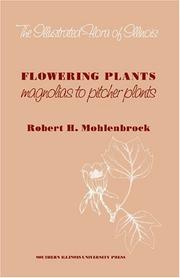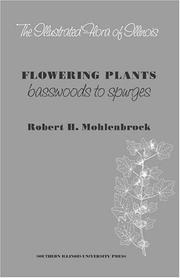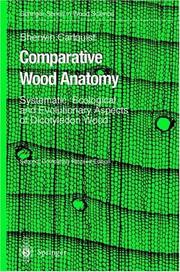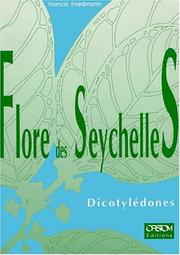| Listing 1 - 10 of 32 | << page >> |
Sort by
|
Book
ISBN: 1280944935 9786610944934 3540310517 Year: 2007 Publisher: Berlin ; New York : Springer,
Abstract | Keywords | Export | Availability | Bookmark
 Loading...
Loading...Choose an application
- Reference Manager
- EndNote
- RefWorks (Direct export to RefWorks)
This volume contains a complete systematic treatment of the flowering plant order Asterales, comprising 12 families with ca. 1,720 genera and about 26,300 species. The order includes Compositae as the largest family of flowering plants. Based on traditional studies, several of the constituent families have long been recognized as being closely interrelated whereas the more recent inclusion particularly of Alseuosmiaceae, Argophyllaceae, Carpodetaceae, Phellinaceae and Rousseaceae is the result mainly of new advances in molecular systematics research. Identification keys are provided for all fa
Dicotyledons --- Dicots --- Dicotyledoneae --- Dicotyledones --- Dicotyls --- Magnoliopsida --- Angiosperms
Book
ISBN: 3211819193 Year: 1986 Publisher: Wien Springer
Abstract | Keywords | Export | Availability | Bookmark
 Loading...
Loading...Choose an application
- Reference Manager
- EndNote
- RefWorks (Direct export to RefWorks)
Book
ISBN: 1282138715 9786613808080 0809380137 0585062080 9780585062082 080930922X 9780809309221 9780809380138 Year: 1980 Publisher: Carbondale Southern Illinois University Press
Abstract | Keywords | Export | Availability | Bookmark
 Loading...
Loading...Choose an application
- Reference Manager
- EndNote
- RefWorks (Direct export to RefWorks)
Dicotyledons --- Dicots --- Dicotyledoneae --- Dicotyledones --- Dicotyls --- Magnoliopsida --- Angiosperms --- Geographical distribution --- Maps. --- Pictorial works. --- Identification.

ISBN: 128213874X 9786613808110 0809380129 0585029911 9780585029917 0809309203 9780809309207 9780809380121 Year: 1981 Publisher: Carbondale Southern Illinois University Press
Abstract | Keywords | Export | Availability | Bookmark
 Loading...
Loading...Choose an application
- Reference Manager
- EndNote
- RefWorks (Direct export to RefWorks)
Dicotyledons --- Dicots --- Dicotyledoneae --- Dicotyledones --- Dicotyls --- Magnoliopsida --- Angiosperms --- Geographical distribution --- Maps. --- Pictorial works. --- Identification.

ISBN: 0809380773 1299132472 0585031371 9780585031378 080931567X 9780809315673 Year: 1990 Publisher: Carbondale Southern Illinois University Press
Abstract | Keywords | Export | Availability | Bookmark
 Loading...
Loading...Choose an application
- Reference Manager
- EndNote
- RefWorks (Direct export to RefWorks)
This sixth volume of dicots contains three orders and eight families. The orders included are Solanales, Campanulales, and Santalales. Within the Solanales are the families Solanaceae, Convolvulaceae, Cuscutaceae, and Polemoniaceae. The Campanulales contain only the family Campanulaceae. The Santalales include the families Celastraceae, Santalaceae, and Viscaceae. As with each volume in this series Mohlenbrock includes a complete plant description, illustrations showing diagnostic features, distribution maps, and ecological notes.
Dicotyledons --- Dicots --- Dicotyledoneae --- Dicotyledones --- Dicotyls --- Magnoliopsida --- Angiosperms --- Geographical distribution --- Maps. --- Pictorial works. --- Identification.

ISBN: 1282138812 9786613808127 0809389908 0585029903 9780585029900 0809310252 9780809310258 9780809389902 Year: 1982 Publisher: Carbondale Southern Illinois University Press
Abstract | Keywords | Export | Availability | Bookmark
 Loading...
Loading...Choose an application
- Reference Manager
- EndNote
- RefWorks (Direct export to RefWorks)
Dicotyledons --- Dicots --- Dicotyledoneae --- Dicotyledones --- Dicotyls --- Magnoliopsida --- Angiosperms --- Geographical distribution --- Maps. --- Pictorial works. --- Identification.

ISBN: 3540411739 Year: 2001 Publisher: Berlin Springer,
Abstract | Keywords | Export | Availability | Bookmark
 Loading...
Loading...Choose an application
- Reference Manager
- EndNote
- RefWorks (Direct export to RefWorks)
630*81 --- 582.6/.9 --- #WPLT:syst --- Wood and bark. Their structure and properties --- Dicotyledoneae --- Dicotyledonae --- wood anatomy --- 582.6/.9 Dicotyledoneae --- 630*81 Wood and bark. Their structure and properties --- Dicotyledons
Book

ISBN: 0060472073 Year: 1974 Publisher: New York Harper and Row
Abstract | Keywords | Export | Availability | Bookmark
 Loading...
Loading...Choose an application
- Reference Manager
- EndNote
- RefWorks (Direct export to RefWorks)
Plants --- Plant morphology --- Dicotyledons --- #WPLT:syst --- 581.46 --- 581.47 --- 581.48 --- 582.61 --- Flora --- Plant kingdom --- Plantae --- Vascular plants --- Vegetable kingdom --- Vegetation --- Wildlife --- Organisms --- Botany --- Morphology (Plants) --- Morphology --- Dicots --- Dicotyledoneae --- Dicotyledones --- Dicotyls --- Magnoliopsida --- Angiosperms --- 582.61 Dicotyledoneae in general --- Dicotyledoneae in general --- 581.48 Seeds --- Seeds --- 581.47 Fruit --- Fruit --- 581.46 Flowers --- Flowers

ISBN: 2709912260 Year: 1994 Publisher: Paris : ORSTOM,
Abstract | Keywords | Export | Availability | Bookmark
 Loading...
Loading...Choose an application
- Reference Manager
- EndNote
- RefWorks (Direct export to RefWorks)
Dicotylédone --- dicotyledons --- Flore --- Flora --- Identification --- identification --- Seychelles --- MAA Malagasy Archipelago --- Dicotyledonae --- Malagasy --- flora --- identification. --- Dicotyledons --- Dicots --- Dicotyledoneae --- Dicotyledones --- Dicotyls --- Magnoliopsida --- Angiosperms --- SEYCHELLES --- FLORA --- DICOTYLEDONS
Book
ISBN: 0198577117 Year: 1989 Publisher: Oxford : Clarendon Press,
Abstract | Keywords | Export | Availability | Bookmark
 Loading...
Loading...Choose an application
- Reference Manager
- EndNote
- RefWorks (Direct export to RefWorks)
Dicotyledons --- -Dicotyledons --- -Dicotyledons, Fossil --- -#WPLT:syst --- Angiosperms, Fossil --- Dicots --- Dicotyledoneae --- Dicotyledones --- Dicotyls --- Magnoliopsida --- Angiosperms --- Classification --- -Congresses --- Evolution --- Congresses --- -Classification --- HAMAMELIDAE --- PHYLOGENESIS --- FOSSILS --- MEETINGS --- EVOLUTION --- SYSTEMATICS
| Listing 1 - 10 of 32 | << page >> |
Sort by
|

 Search
Search Feedback
Feedback About UniCat
About UniCat  Help
Help News
News